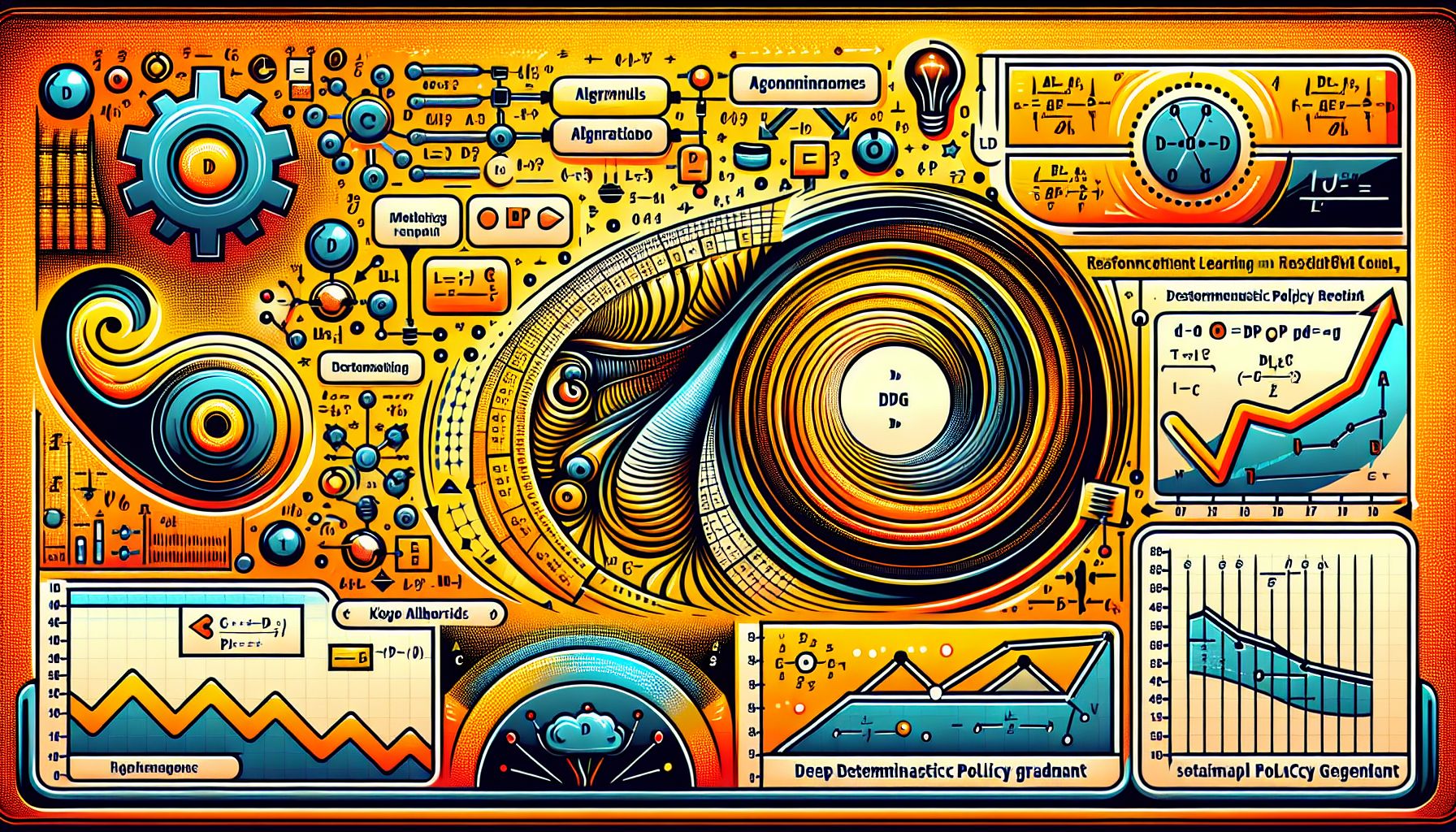📌 Let’s explore the topic in depth and see what insights we can uncover.
⚡ “It’s time to revolutionize your understanding of reinforcement learning. Dive into a world where policy gradient isn’t just deterministic, but also capable of going deeper with DDPG!”
Hey there, AI enthusiasts! 🚀 Ever wondered how Google’s AlphaGo became the undisputed champion against the world’s top-ranked Go players? Or how OpenAI’s AI system managed to beat a team of professional players in the popular video game Dota 2? The answer lies in the fascinating world of Reinforcement Learning (RL), and more specifically, in algorithms like the Deterministic Policy Gradient (DPG) and its more advanced version, the Deep Deterministic Policy Gradient (DDPG). In this blog, we’ll dive headfirst into the intricate web of these algorithms, unlocking their secrets and understanding their power. Whether you’re an AI novice dipping your toes into this vast ocean, or a seasoned pro looking to expand your knowledge, this blog post is for you. So, buckle up and prepare for a thrilling journey into the depths of DPG and DDPG! 🎢
🎯 What are Policy Gradient Methods?

"Unveiling the Mysteries of DDPG Algorithms"
Before we delve into DPG and DDPG, let’s first get a handle on what Policy Gradient Methods are. Imagine you’re a robot trying to navigate your way through a maze. You can take certain actions like moving forward, turning right or left, and so on. The choice of these actions at each state in the maze is your policy. Policy gradient methods are a type of reinforcement learning algorithm that optimizes the policy directly. These algorithms work by improving the policy using the gradient ascent algorithm on the expected reward. In simpler words, policy gradient methods tweak the policy little by little, guiding the robot to find the best path out of the maze.
Now, let’s turn our attention to the star of the show - the Deterministic Policy Gradient.
🕹️ Deterministic Policy Gradient (DPG)
In the algorithmic world, deterministic means that the output is entirely determined by the input. In the context of policy gradient methods, deterministic algorithms like DPG provide a specific action for every state. Returning to our robot maze analogy, under a deterministic policy, given a specific location in the maze, the robot would always take the same action. The DPG algorithm was born out of the need to handle high-dimensional action spaces. Traditional policy gradient methods struggle with these spaces due to the need to estimate the action-value function and the policy gradient. DPG solves this problem by eliminating the need for action-value estimation, thereby making it more efficient.
The DPG algorithm can be summarized as follows:
Initialize the actor network with weights θ and the critic network with weights w.
- Generate a sequence of states and actions according to the current policy.
Compute the gradient of the policy using the critic.
- Update the weights of the actor using the policy gradient.
Update the weights of the critic using Temporal Difference (TD) error.
Sounds pretty cool, right? But wait, there’s more. The DPG has a souped-up version called the Deep Deterministic Policy Gradient. Let’s check it out.
🚀 Deep Deterministic Policy Gradient (DDPG)
The DDPG algorithm takes the DPG to the next level by combining it with the power of Deep Learning. It uses Neural Networks as function approximators to handle large and continuous action spaces. In our maze analogy, imagine the maze is now enormous, filled with countless possible states. Using DDPG, our robot is now imbued with the power of deep learning, enabling it to handle this complex, continuous maze better.
The DDPG algorithm works similarly to DPG, but with a few key differences:
DDPG uses two neural networks
one for the actor and one for the critic. These networks estimate the optimal policy and the value function, respectively.
DDPG employs a technique called experience replay. Instead of learning from consecutive experiences, the agent stores experiences in a replay buffer and randomly samples from it. This technique helps to break the correlation between consecutive experiences and stabilize the learning process.
- DDPG uses target networks to provide a stable target for learning. Target networks are slow-moving averages of the actor and critic networks, which prevent the targets from changing too rapidly.
The policy update in DDPG is done using the deterministic policy gradient theorem, which is suitable for continuous action spaces.
DDPG has been used successfully in various applications such as robotic control tasks, gaming, and even in the finance industry for portfolio management.
💡 Tips for Implementing DPG and DDPG
While DPG and DDPG are powerful tools, they can be tricky to implement. Here are a few tips to keep in mind:
Choose the right function approximator
Neural networks are commonly used, but depending on your problem, other approximators like linear models or decision trees might work better.
Normalize your inputs
This can prevent the weights in your network from becoming too large or too small, which can cause learning to become unstable.
Tune your hyperparameters
Parameters like the learning rate, discount factor, and the size of the replay buffer can significantly impact your algorithm’s performance.
Be patient
Training RL algorithms can take a long time, especially on more complex tasks. Don’t be discouraged if your agent doesn’t perform well initially.
🧭 Conclusion
There you have it - a deep dive into the exciting world of Deterministic Policy Gradient and Deep Deterministic Policy Gradient. These algorithms lie at the heart of some of the most advanced AI systems in the world, and understanding them is a crucial step on your journey towards mastering Reinforcement Learning. Remember, the world of AI is like a vast, unexplored wilderness, filled with untold treasures and hidden pitfalls. The journey may be tough, but the rewards are worth it. So keep pushing, keep learning, and most importantly, have fun along the way! 🎉
Till next time, happy coding! 💻🚀
🌐 Thanks for reading — more tech trends coming soon!
